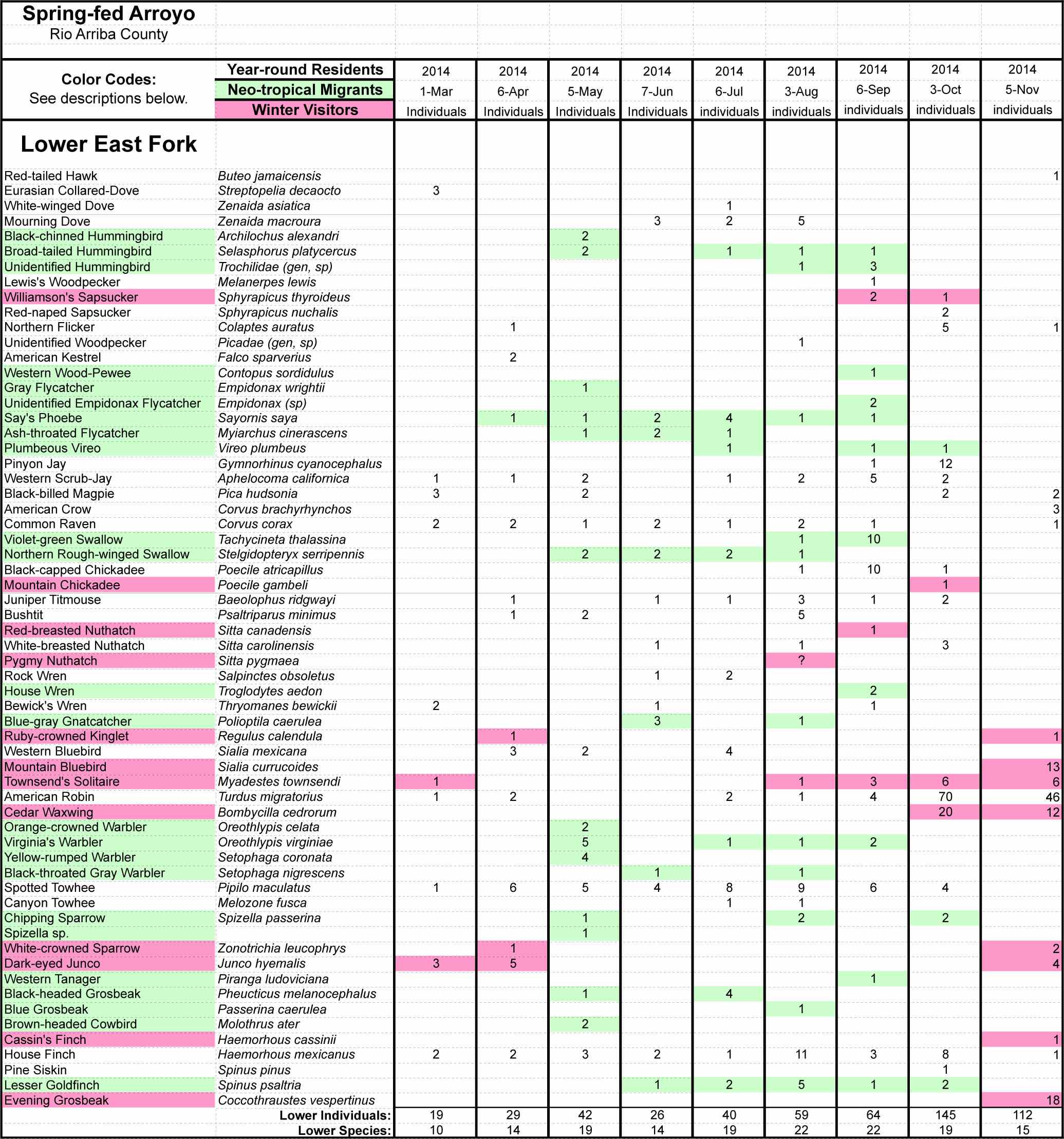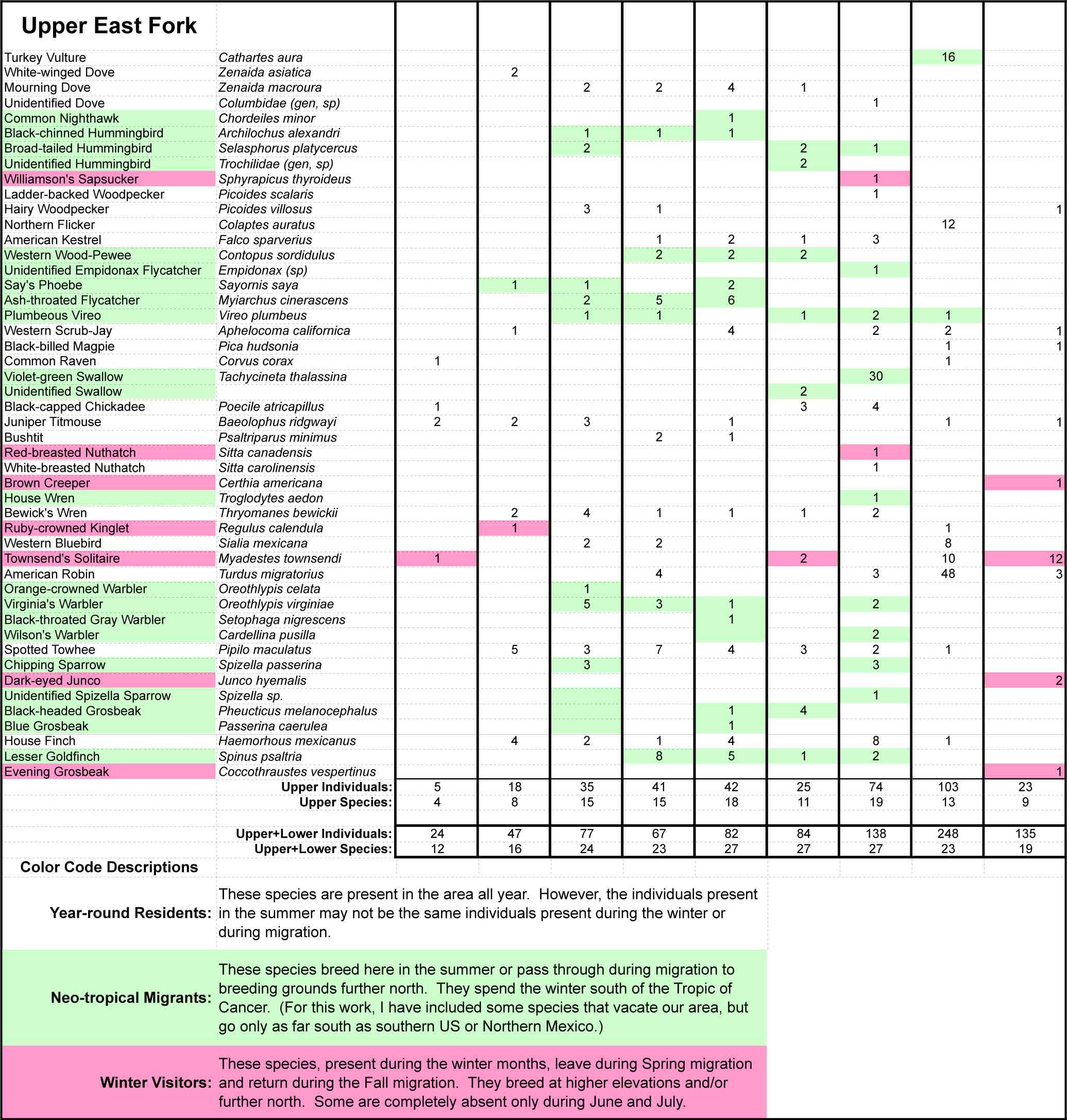
Changes in Bird Species and Number through the seasons in a spring-fed arroyo in Northern New Mexico.

Graphs, Data and Analysis through November 5, 2014
For background, see:
Analysis through June 7, 2014
Analysis through September 6, 2014
Analysis through October 3, 2014
This month in short:
The Neo-tropical Migrants are now gone. The Winter Visitors are back. The number of individuals and species present declined significantly.
New this Month:
Raw Data Grouped by Season
Range Maps for all species recorded:
Year-Round Species
Neo-Tropical Migrants
WinterVisitors
Graphs:
The table and graph below show the number of individuals (Purple in table and graph) and the number of species (Green in table and graph):

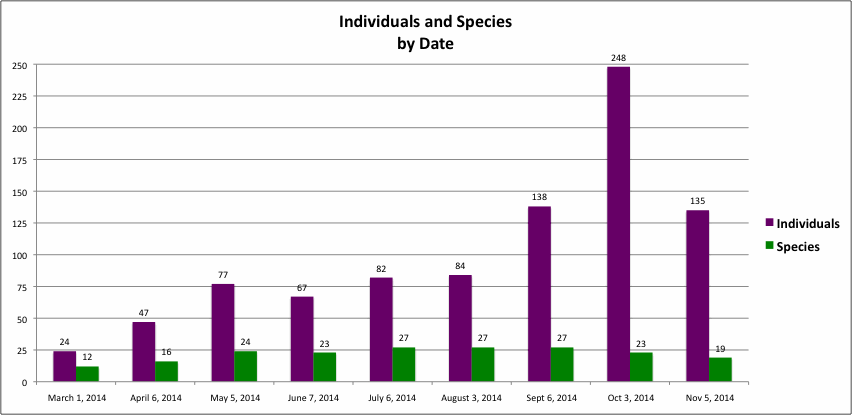
As expected, the number of species present peaked during the breeding season and is now likely to continue to decline as Winter sets in.
The number of individuals present peaked in October during the Fall migration.
About 60% of the individuals recorded in November were in flocks of three species: American Robin (49), Evening Grosbeak (19) and Cedar Waxwing (12). These flocks may well be migrants that will move on before next month. The Grosbeaks and Waxwings are also nomadic during the winter, so it is possible they will be present if food is available. Given the good rainfall during the food production time this summer, this is certainly a possibility.
This graph breaks down the species into Year-round (blue), Winter Visitors (red) and Migrants (green).

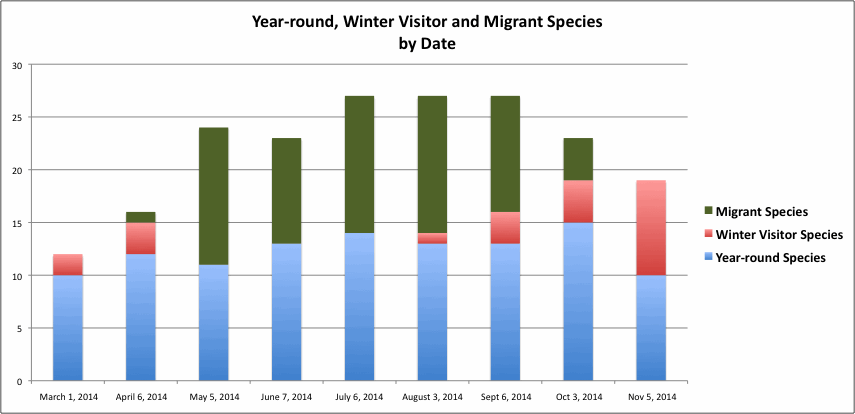
The seasonal variation is beginning to become clear, with Winter Visitors absent in May, June and July, but present in all other months, and Neo-tropical Migrants arriving in March, but departing by November.
(See Raw Data Grouped by Season)
This graph breaks down the counts of individuals by Year-round, Winter Visitors and Migrants.

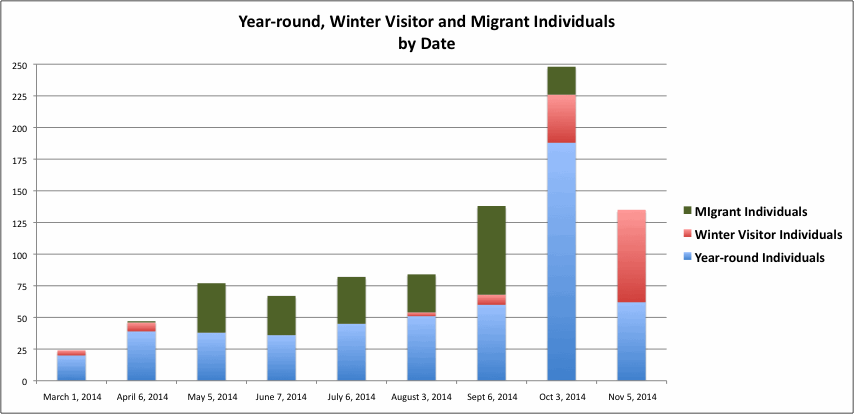
Recall that the large number of Year-round individuals on the October count was due to large migrant groups of American Robins (118 Individuals) and Northern Flickers (17 Individuals).
On this count, there were still 49 Robins (which are likely still migrants), but only one Flicker.
The Future:
I expect the number of individuals and species present to continue to decline in the coming months. Consider the findings from March.
There is one change in the environment that might affect that outcome. In March we were at the end of a deep multi-year drought. The drought may have resulted in low food production during the last few years. Since this summer was quite wet, food production may have improved and might support a larger wintering population. On the other hand, the spring feeding this arroyo never stopped flowing during the dry years. We'll see!
Raw Data:
